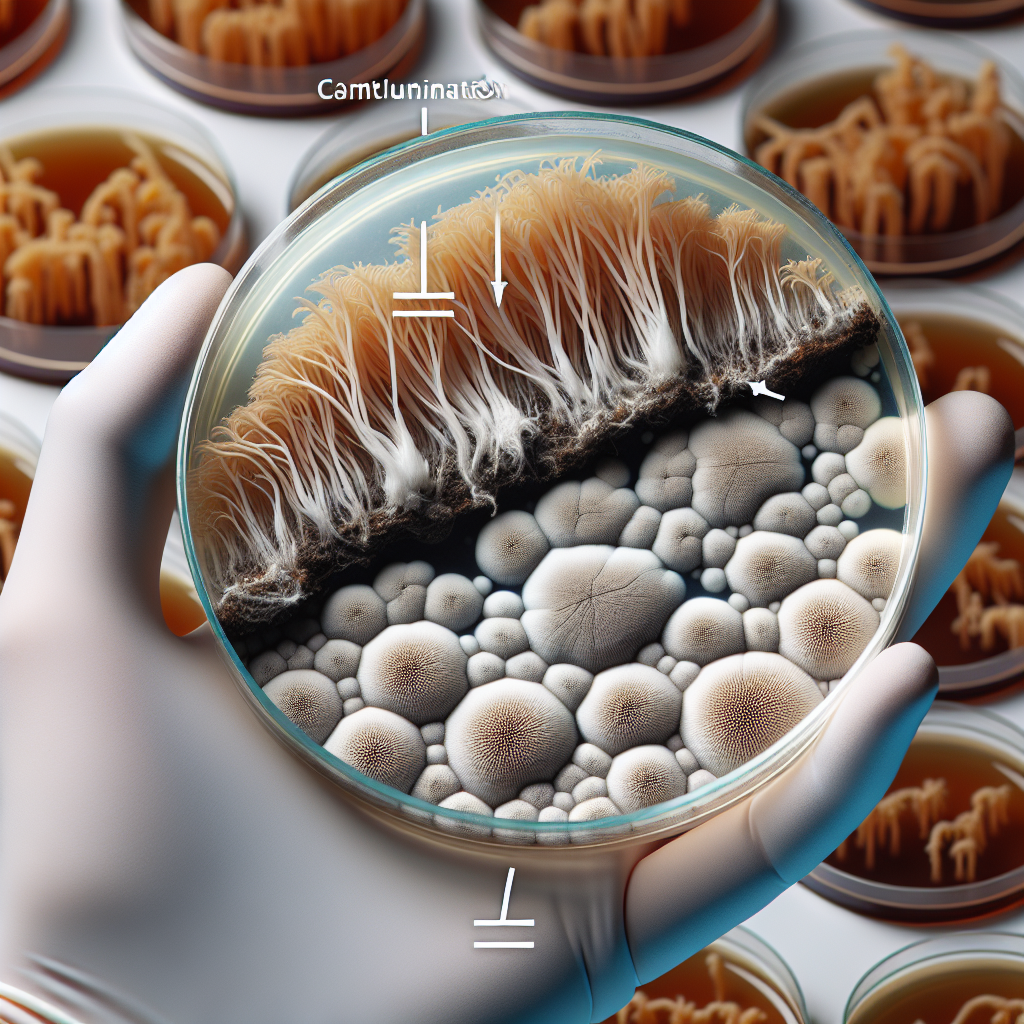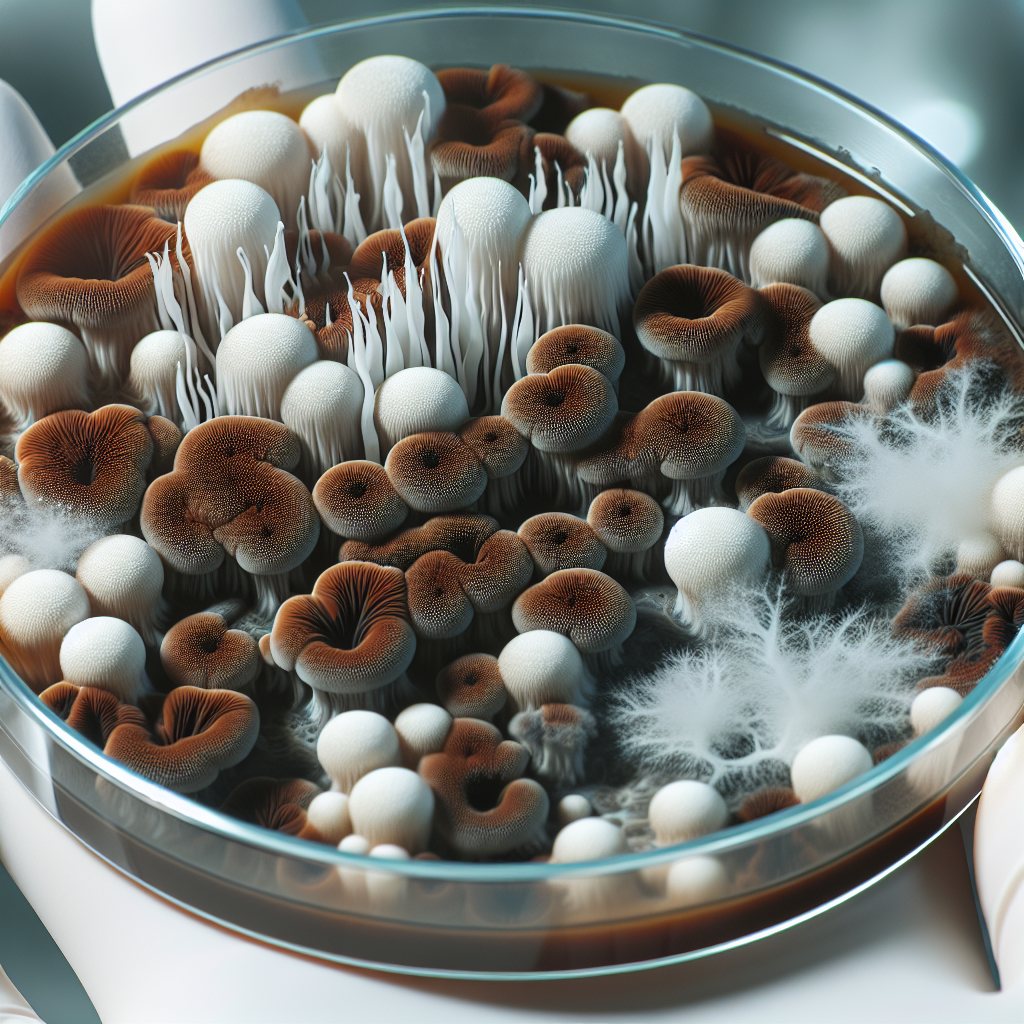In the comprehensive article titled “White Contamination in Mycelium: An in-depth study”, an exploration into the growing challenge faced by mycologists and mushroom cultivation enthusiasts across the world is initiated – the phenomenon of ‘White Contamination’. This piece sets a spotlight on this perplexing issue, subtly deciphering its resurgence and complications, the range of causes, potential remedies, and preventative measures that could be adopted. This article will bring to your understanding, the intersection of science and practical expertise to manage and mitigate the adverse effects of white contamination in mycelium.

Understanding White Contamination in Mycelium
Definition of white contamination
White contamination is a term used to describe a type of fungus growth that frequently occurs in mycelium cultures. This contamination is most commonly white, giving it its moniker, and primarily consists of unwelcome fungal or mold spores.
The biology of mycelium
Mycelium is a structure that’s often considered the vegetative part of a fungus. It is a network of tiny threads or filamentous structures, known as hyphae, which can grow and spread. As the principal growth format of fungus, it’s essential for nutrient absorption, making it all the more vital to maintain its health and prevent contamination.
Understanding the mycelium life cycle
The life cycle of mycelium follows a typical fungal progression. It begins with a spore that germinates and sprouts into a single hypha, which later forms a mycelium network. Under favourable conditions, this mycelium can bear fruit bodies like mushrooms. Contamination at any stage can disrupt this life cycle.
Types of White Contaminations
Cobweb mold
Cobweb mold, also known as Dactylium Mildew, is a common white contamination. It is notoriously rampant, spreads quickly, and poses a significant risk to mycelium structures. The shitaky mushrooms are particularly prone to this mold, which typically manifests as a thin, fluffy white presence.
Trichoderma
Trichoderma is a genus of fungi widely recognized in the mycology world for its virulent contaminating capacities. It forms a vibrant, white, cottage-cheese-like growth on the mycelium, which turns green over time due to sporulation. Given its speed and invasiveness, it’s often the most dangerous of white contaminants.
Aspergillus
Aspergillus species are another group of fungi known for their contamination abilities. Often more subtle than the others, Aspergillus contamination can be more challenging to detect until the later stages because it resembles healthy mycelium.
Penicillium
Penicillium, a blue or green mold, usually begins as a white mold, misleading cultivators into thinking they have healthy mycelium. The mold spores quickly cover the entire surface, rendering the substrate useless for mushroom cultivation.
The Role of Hygiene in Preventing Contamination
Importance of cleanliness in mycelium cultivation
Cleanliness is paramount in mycelium cultivation. Any lapse in hygienic conditions can welcome harmful fungal spores or bacteria, leading to contamination. As such, constant vigilance and maintenance of optimum cleanliness standards are prerequisites for successful mycelium growth.
Commonly used hygiene practices
Standard hygiene practices in mycelium cultivation include regularly cleaning cultivation spaces, sterilizing equipment before and after use, and wearing sanitized clothing. Ensuring the substrate – the medium in which mycelium grows – is sterile before use is also crucial.
Consequences of poor hygiene
Neglecting proper hygiene can lead to contamination, which not only renders the cultivated crop useless but can also pose health risks. Most mold spores, including those from white contamination, can cause allergic reactions and even more serious health problems in humans.

Identifying White Contamination
Signs of white contamination in mycelium
Early identification of white contamination is key to controlling its spread. Unusual or excessive white, fluffy growth, changes in texture, or a sharp, musty odor can be indicative of contamination.
Visual representation of white contamination
A visual examination is the first step in identifying white contamination. It typically appears as an overly dense, white fur-like or cottony growth on the substrate or mycelium. Over time, it may develop colored spores depending on the type of contaminant mold.
How speed of growth can indicate contamination
The rate of mycelium growth can also provide clues to potential contamination. A surprisingly rapid expansion of white matter can signify the presence of aggressive, contaminating fungi such as Trichoderma or cobweb mold.
Methods of Controlling and Preventing White Contamination
Best practice in substrate preparation
Substrate preparation plays a crucial role in contamination prevention. The substrate must be fully sterilized, either through pressure cooking or pasteurization, prior to use. It is also crucial to cool it properly before introducing the mycelium to prevent thermal kills.
The importance of optimal environment conditions
Maintaining optimal environmental conditions, such as temperature, humidity, and light, can significantly reduce the risk of contamination. Contaminating molds generally flourish in damp and poorly ventilated areas, so managing these factors can help ensure the only growth is that of your desired mycelium.
Sterilization techniques
Sterilization is a powerful weapon against white contamination in mycelium. Regular sterilization of equipment, along with the use of HEPA filters to purify the air, can considerably reduce the chance of contamination. It’s also common to sterilize the substrate in an autoclave or pressure cooker before inoculation.
Impact of White Contamination on Mycelium Growth
Negative effects on the mycelium yield
White contamination presents a significant threat to mycelium yield. It saps nutrients from the mycelium, impeding its growth and often leading to a decline or halt in production.
How contamination can alter mycelium structure
White contamination also alters the structure of mycelium. Hyphae infused with molds can deform or clump together, reducing the functionality of the mycelium matrix.
Time delay in mushroom fruiting caused by contamination
Contamination can delay the fruiting process, setting back harvest time. The severity of the delay correlates with the extent of the contamination.
Example Cases of White Contamination
Real-life examples of white contamination
Numerous real-life cases underscore the devastation white contamination can wreak on mycelium crops. For example, a well-known mushroom farm once reported almost total crop loss due to severe Trichoderma contamination.
How these cases were managed
Most cases are managed by improving hygienic practices, refining substrate preparation, and optimizing environmental conditions. In some instances, entire crops must be destroyed to prevent the spread of contamination.
Learnings from these cases
These cases provide critical reminders of the importance of stringent hygiene protocols, diligent monitoring for early detection, and immediate action when contamination is suspected.
Research and Advances in White Contamination Management
Latest research on white contamination
Research is ongoing to devise better strategies for managing white contamination. Recent studies focus on the potential of antifungal compounds and the role of beneficial microbes in combating contaminants.
Potential development in contamination prevention
Innovative techniques are emerging to prevent contamination. These include the development of resistant strains of mycelium and the use of competitive exclusion, where harmless microbes are intentionally introduced to crowd out potential contaminants.
Innovation in mycelium cultivation techniques
Technological advancements are shaping mycelium cultivation practices. From climate-controlled environment systems to automated sterilization tools, these innovations are offering new ways to minimize white contamination risks.
Expert Opinions on White Contamination
Expert views on prevention and control of white contamination
Experts emphasize the need for hygienic practices, well-prepared substrate, and favorable growing conditions. They also recommend routine inspections and immediate remedial action upon detecting signs of white contamination.
Interviews with mycologists and cultivators
Through interviews with experienced mycologists and cultivators, it’s clear that a more holistic approach is needed when managing white contamination. Central to this is understanding the biological nuances of both the mycelium and the contaminant molds.
Emerging trends in mycelium cultivation industry
Trends suggest increasing interest in organic cultivation practices and stricter hygiene protocols. There is also a push towards understanding mycelial resilience and leveraging its innate mechanisms for combating contamination.
Future Perspective on White Contamination in Mycelium
Predicting white contamination trends
The future is likely to see increased instances of white contamination due to climate change and increased mycelium cultivation. However, this incurrence should be mitigated by advancements in contamination management techniques.
Future research needs in this area
Future research necessities include exploring genetic modification for resistance, understanding ecological relationships between mycelium and potential contaminants, and leveraging the innate defense mechanisms of mycelium.
The future of mycelium cultivation with respect to white contamination
While white contamination will remain a challenge, the future of mycelium cultivation looks promising. With continuous research, strict hygiene protocols, and evolving technologies, managing and preventing white contamination will become more effective. Ultimately, these advancements should fortify mycelium industries and lead towards a more robust, sustainable future of mushroom cultivation.